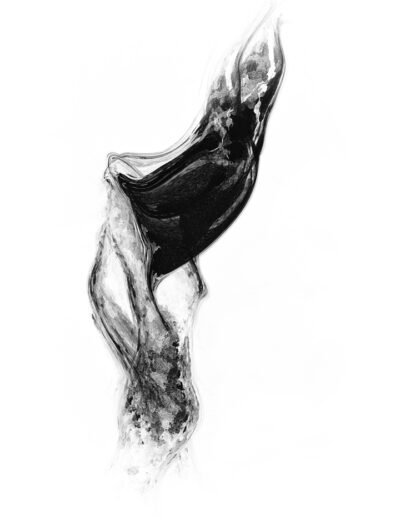This mini feature showcases one of the eighteen open submission portfolios selected for inclusion in our printed journal based on the theme of the right to roam

Riparian Rights.
An undisclosed chalk stream in Hertfordshire, December 2020.
Public access to England’s watercourses amounts to only 3% of the 42,700 miles available.
“If you’re by a river, on a river or in a river, there’s a 97% chance that you’re not allowed to be there.” – Nick Hayes, The battle for England’s waterways, 2019.
Where a watercourse divides two adjoining properties (in this case public / private) the boundary is defined by the centreline of the water between the opposing banks. By its very definition that line cannot be fixed, like a wall or a fence, but is in a constant state of flux. Over time the edges of the banks ebb and flow; endlessly reconfigured by accumulations and detritions, floods and droughts, damage and repair. With each new amendment to the physical geometry of the banks, the boundary shifts; it meanders and weaves, mimicking the passage lines of detritus floating on the surface above.
The images presented here collectively represent an attempt to map this condition, to make manifest this tenuous line of ownership concealed below the surface.
The full set of images from the open submission are shown below (click to view image larger in the original format).
Website: tracingsilence.com
Instagram: @tracing_silence
Twitter: @tracing_silence
CREDITS
Unless otherwise stated, all words and images in this article are © Guy Dickinson
THE JOURNAL
Our biggest, most content packed, and socially current publication to date, exploring the theme of the right to roam. Featuring an introduction by our very own co-founder Rob Hudson and a selection of work from 37 contributors, including the one featured above. Click on the image of the journal cover below to take you to the journal’s information and ordering page.






